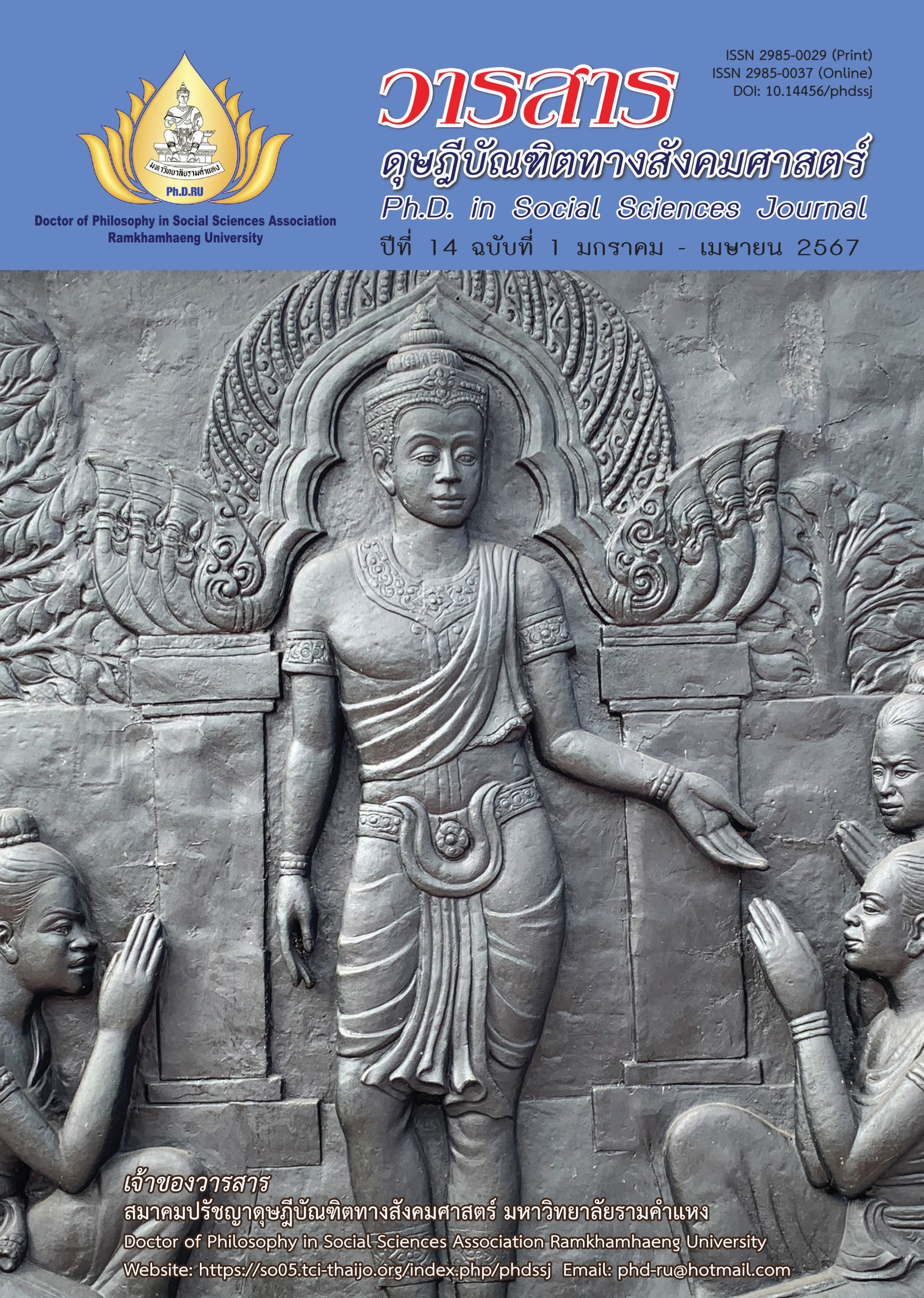Identity-Based Creative Tourism Development by Ban Sanam Community, Ban Rai Subdistrict, Ban Rai District, Uthai Thani Province
Main Article Content
Abstract
This research article aims to (1) develop creative tourism based upon community identity, (2) a tourism product upon community identity and (3) potential for marketing channels based upon community identity. The study was performed with participatory research method for qualitative and quantitative aspects. The key informants included entrepreneur in tourism in the local community of 10 persons and 50 tourists who travelled at Ban Sanam. The data collection was conducted with interview forms and questionnaire. The statistics for analysis was carried out with percentage, mean, standard deviation and content analysis.
Findings are as follows: The development of tourism based upon the community context of Ban Sanam with community identity including the geographical aspect of abundant forests, development of the community’s history tellers, community museum, organizing tourism activities and community’s cultural pathways. The products from creative tourism upon the community identity of Ban Sanam were backpacks and bookmarks which were designed from tracery of the community’s local woven fabric. As for the development of potential development for marketing channels, it was found that the container and souvenir of Ban Sanam could reflect the story of the community and tourism routes and tourism activities of Ban Sanam. The community had its brand for the products and development of marketing online.
Article Details

This work is licensed under a Creative Commons Attribution-NonCommercial-NoDerivatives 4.0 International License.
Academic articles, research articles, and book reviews in the Ph.D. in Social Sciences Journal are author’s opinions, and not the publisher’s, and is not the responsibility of the Ph.D. in Social Sciences Journal Philosophy Association, Ramkhamhaeng University. (In the case that research is done on human, the researcher has to be trained in Ethics for Doing Research on Human Training and has to produce the evidence of the training).
References
Chaemchamrus, K., Erb-im, N., Phuanpoh., Y., & Sermchayut, R. (2022). Upgrading and increasing value of souvenir products of tourist attractions: Experience the charm of the old city lifestyle, Phra Nakhon Si Ayutthaya province. Journal of Arts Management, 6(3), 1585-1603. [In Thai]
Chompoopanya, A., & Rojanatrakul, T. (2022). The development potential of the community participation model to sustainable tourism community. Journal of Modern Learning Development, 7(8), 414-430. [In Thai]
Chumkate, J. (2017). Product development from local wisdom to increase an efficiency of community-based management with sustainability in Thai-Muslim village, Amphur Cha Am, Phetchaburi province. Silpakorn University. [In Thai]
Creswell, J. W. (2009). Research design: Qualitative, quantitative, and mixed methods approaches (3rd ed.). Sage.
Dachum, P. (2013). Creative tourism development: From concepts to practices for Thailand. Silpakorn University Journal, 33(2), 331-366. [In Thai]
Greene, J. C., Caracelli, V. J., & Graham, W. F. (1989). Toward a conceptual framework for mixed-method evaluation designs. Educational Evaluation and Policy Analysis, 11(3), 255-274.
Inthamon, C., & Lersphoottharak, S. (2019). The management model of homestay innovation business in the community for tourists. Silpakorn University E-Journal (Social Sciences, Humanities, and Arts), 43(3), 85-103. [In Thai]
Kaewsritong, J. (2022). Community product development. Pibulsongkram Rajabhat University. [In Thai]
Kaewyu, P., & Pakdeepinit, P. (2014). Guidelines for development creative tourism through adapter using hyacinth handicraft in Muang district, Phayao province, Thailand. In Proceedings of the 4th Sustainable Rural Development Conference “ Rethink: Social Development for Sustainability in ASEAN Community” 11-13 June 2014 (pp. 321-329). Centara Hotel and Convention Centre, Khon Kaen. [In Thai]
Likert, R. (1932). A technique for the measurement of attitudes. Archives of Psychology, 140, 5-55.
National Tourism Policy Committee. (2021). National tourism development plan (2021-2022). Retrieved from https://anyflip.com/zzfck/gopk/#google_vignette [In Thai]
National Tourism Policy Committee. (2023). National tourism development plan version 3 (2023-2027). Retrieved from https://online.anyflip.com/zzfck/rptc/mobile/index.html [In Thai]
Saokham, P., Keawnet, P., Sangwan, N., Saennumpol, N., & Srithong, P. (2018). Development of local product for hotel marketing business in Chiang Rai province. Dusit Thani College Journal, 12(1), 165-182. [In Thai]
Somnuxpong, S. (2017). Identity of chakangrao from an ancient city to creative tourism development. Srinakharinwirot Business Journal, 8(2), 140-154. [In Thai]
Srirak, C. (2022). Development of creative tourism based on community wisdom heritage of Ban Nonthan, Nongbua Lampu. Journal of International and Thai Tourism, 18(1), 86-111. [In Thai]
Thawornwisit, S., & Wongmonta, S. (2021). Approaches to the promotion of cultural tourism in Nan province. Journal of the Association of Researchers, 26(1), 244-256. [In Thai]
The Village Committee of Ban Sanam. (2018). Information village for quality of life development, fiscal year 2018. Retrieved from https://uthaithani.cdd.go.th/wp-content/uploads/sites/76/2018/09/หมู่บ้านสารสนเทศบ้านสะนํา-บ้านไร่.pdf. [In Thai]
Warunsub, D. (2018). A cultural capital management model aimed at creative tourism in Thailand. Doctoral Dissertation of Philosophy (Management for Development), Rajabhat Rajanagarindra University. [In Thai]
Wisudthiluck, S., Saiphan, P., Teparakul, O., & Sindecharak, T. (2011). Creative tourism model. Designated Areas for Sustainable Tourism Administration (Public Organization). [In Thai]


